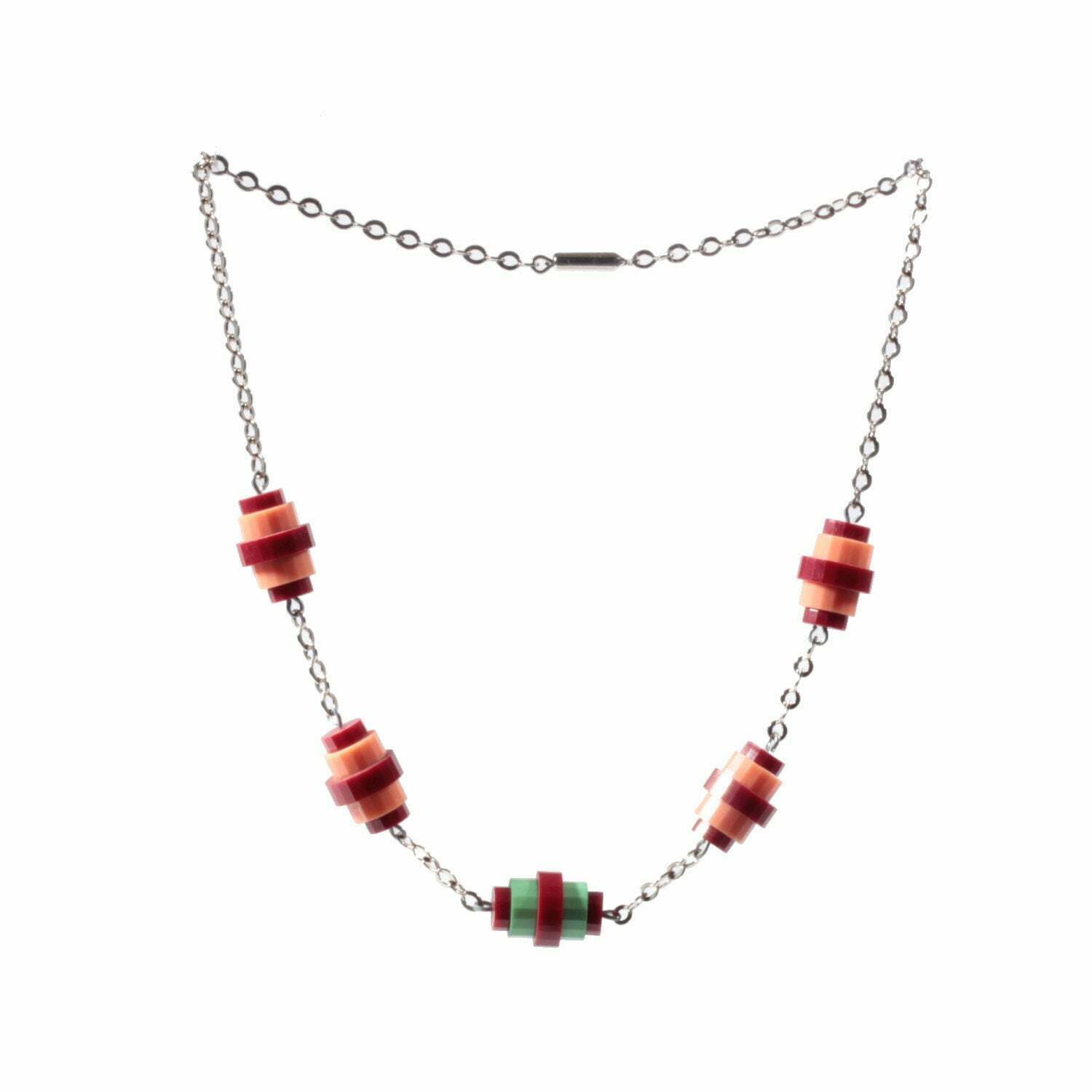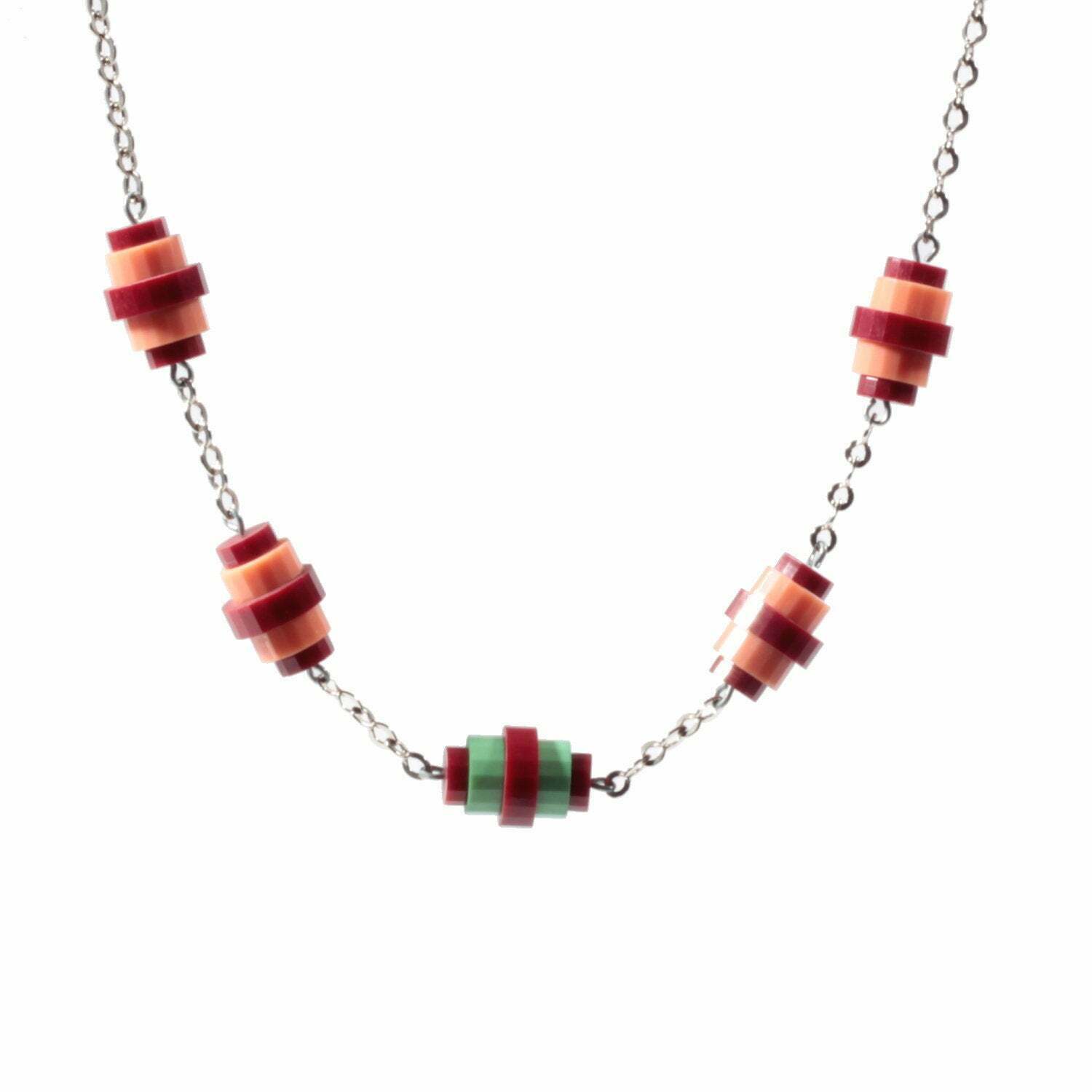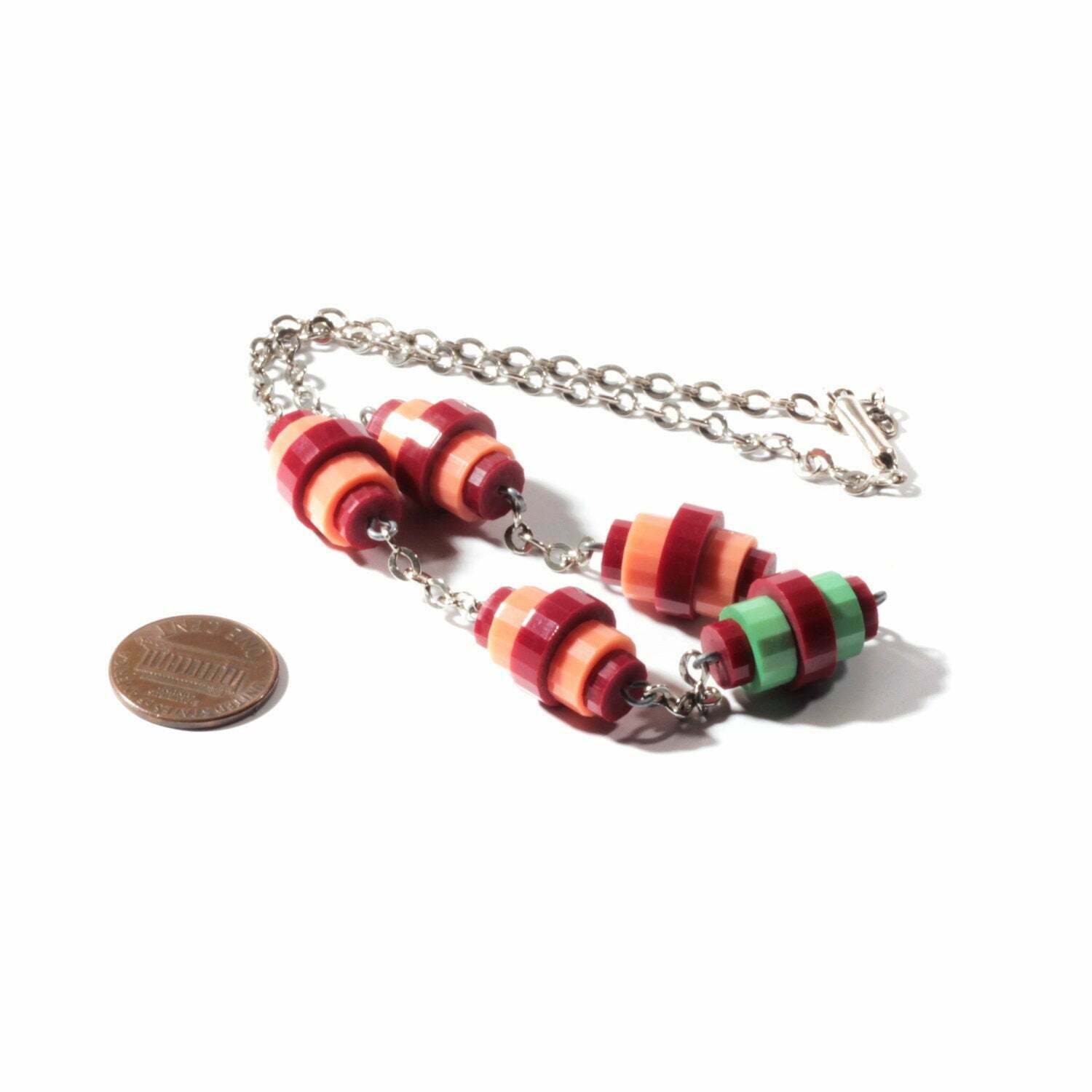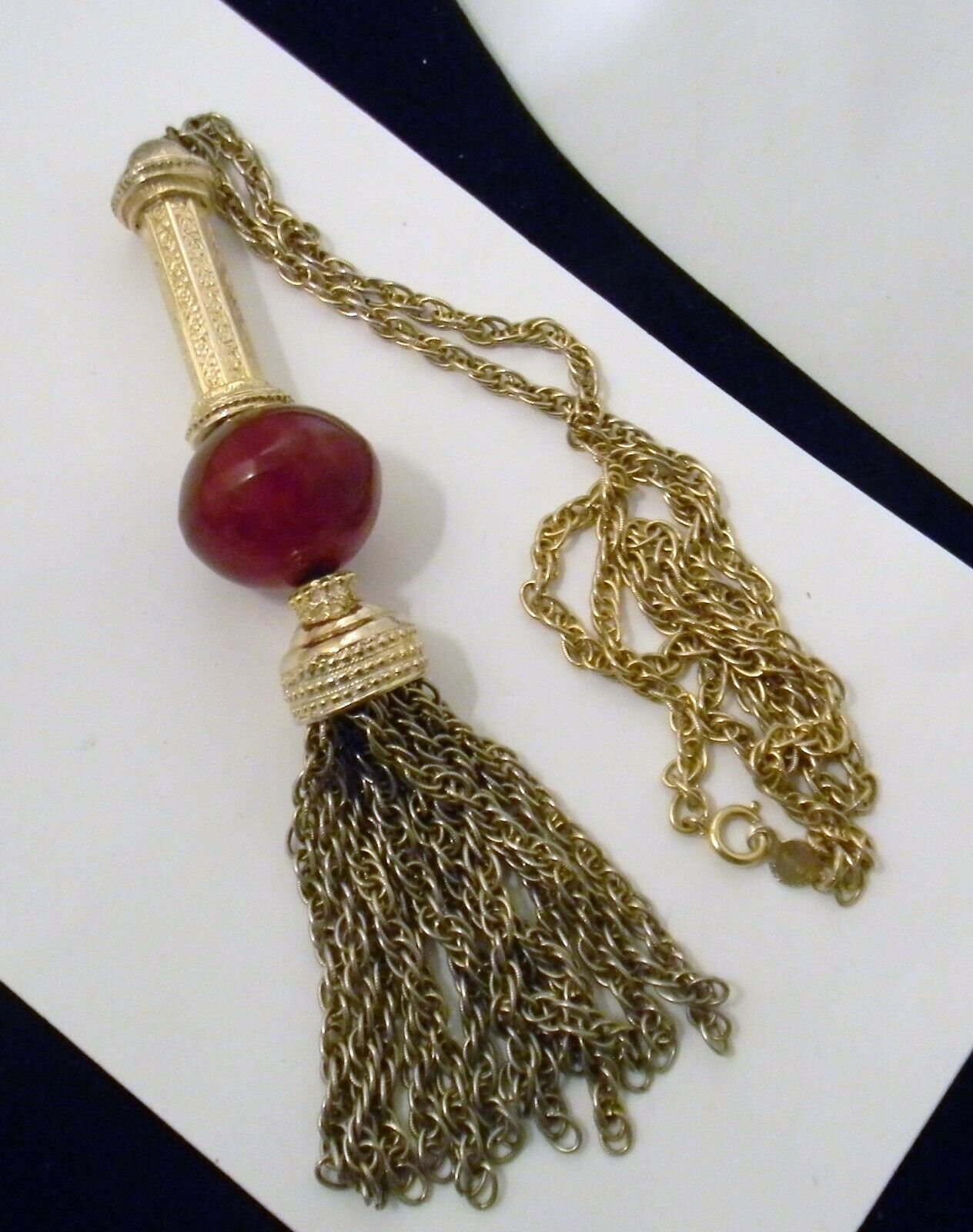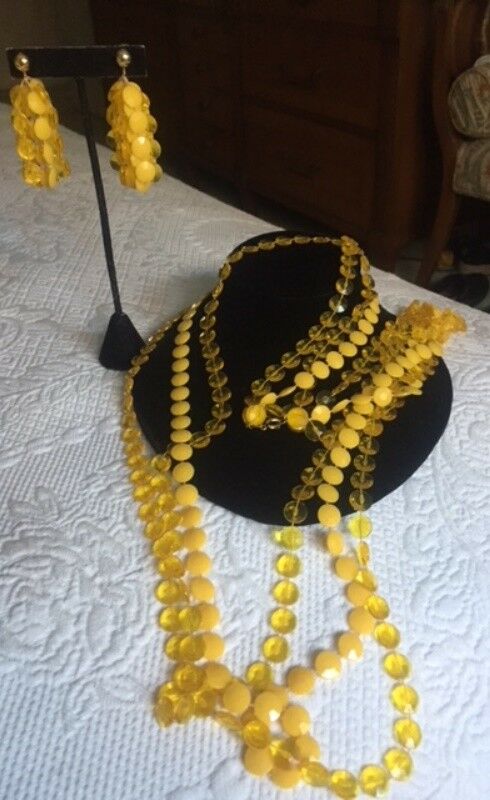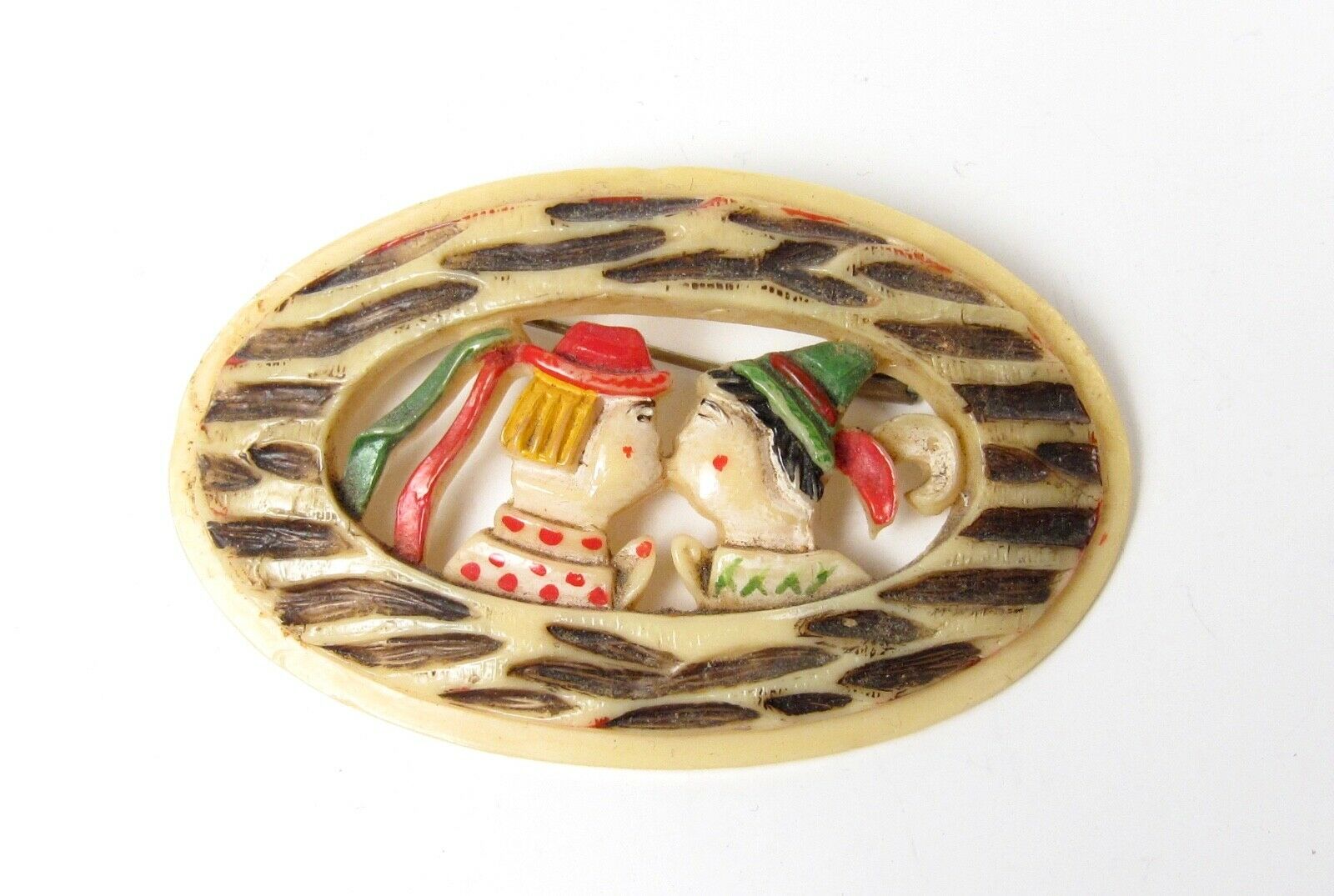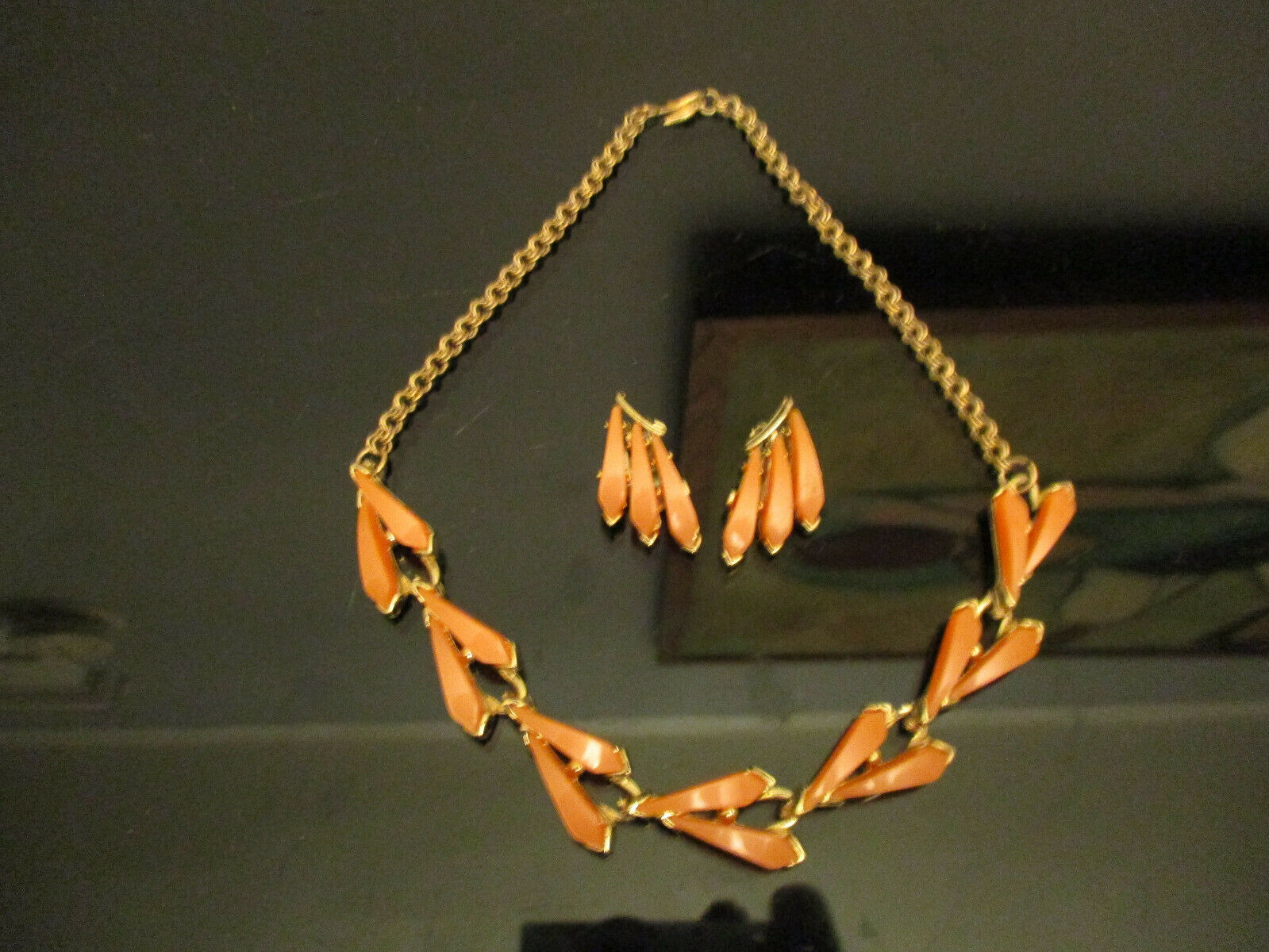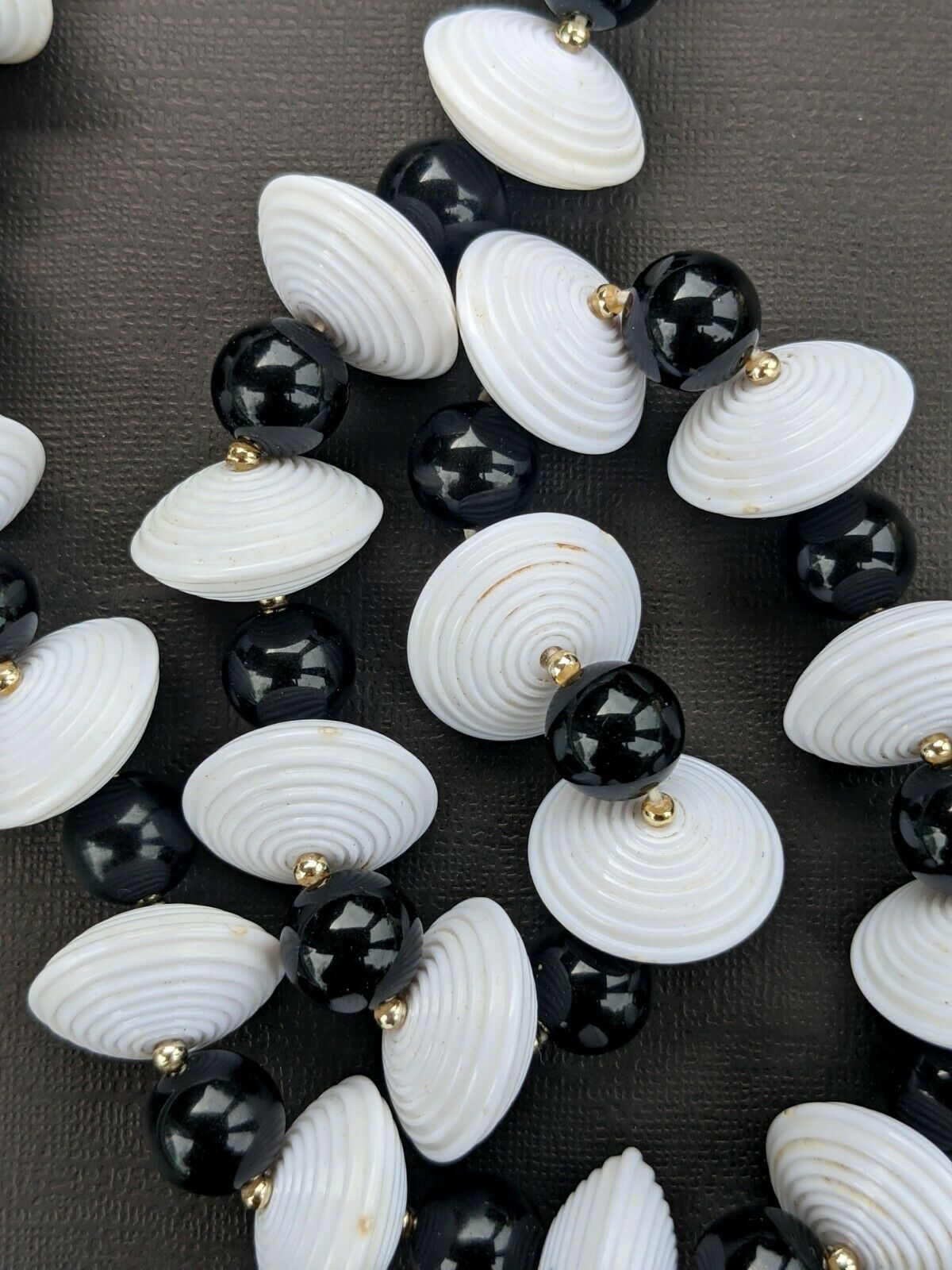-40%
Vintage Art Deco Bauhaus necklace galalith coral green carnelian rondelle beads
$ 12.67
- Description
- Size Guide
Description
Vintage necklace with coral, green and carnelian red faceted rondelle galalith beads. With a chrome plated link chain and chromed clip barrel clasp closer. This necklace is from new old stock, recently discovered in Jablonec nad Nisou (formerly Gablonz), the home of Czechoslovakian jewelry.This necklace follows the Bauhaus style of the Jakob Bengel company in Germany whose pieces of jewelry were a mixture of chains and different geometric elements of colored Galalith. The company is well documented as being a major exporter to Gablonz from where jewelry would be distributed around the world.
Size: 16 inches approx
Size beads: 8 - 13mm; 5/16" - 8/16"
Material: galalith
Year: Vintage
Condition: Authentic vintage condition. These have been stored away for a considerable time and some of the bead pins have tarnished. These could also be used as components for contemporary vintage jewelry design.
Quantity: 1
In the early 1900’s, notable French and German jewelry makers such as Coco Channel and Jakob Bengel began using galalith in the production of jewelry, with its widest use in the 1920’s and 30’s
Galalith, also know as ‘milkstone’ (Milchstein’) was developed in Germany in 1897 by combining the milk protein casein with formaldehyde, and in the early 20th century it was used in industry and for household items, being relatively simple and inexpensive to produce, easy to color, and heat-resistant.
